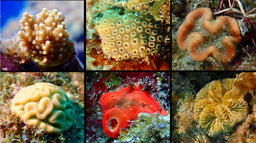Exploring the genome evolution linked to sexual size dimorphism in mammals
Published in Ecology & Evolution, Neuroscience, and Genetics & Genomics

Key findings
Using a comparative genomics approach across 124 mammalian species, we identified significant associations between SSD and changes in gene family sizes.
- Gene family expansion and contraction: We found that high levels of SSD correlate with an expansion of gene families related to olfactory sensory perception and a contraction of those associated with brain development.
- Functional enrichment: Using GO categories, we found that expanded gene families were significantly enriched in olfactory functions. Conversely, the contracted gene families were enriched in various aspects of brain development, highlighting potential trade-offs in evolutionary pressures.
- Temporal gene expression patterns: Analysis of gene expression patterns revealed that SSD-associated genes exhibit distinct temporal patterns in the brain, with expanding genes showing higher expression in postnatal stages and contracting genes having higher prenatal expression.
Our findings could suggest the existence of selective pressures influencing brain development in monomorphic species. In many cases, these species present monogamous mating systems, complex social skills, parental care, and highly developed brain functions in males and females.
Implications for Evolutionary Genomics
This study advances our understanding of how evolutionary pressures, potentially sexual selection, can shape genome evolution. It also presents new avenues for exploring the genetic basis of sexually dimorphic traits and how these could shape our mammalian life stories.
Personal Insights
This paper was like a roller-coaster journey, to say the least, that started during my PhD. After many ups and downs, including the isolation of complete online lockdown, dealing with my and some of my colleagues' inner demons, and experiencing the natural solitude of doing a PhD, I also forged new personal connections and experienced some character development. This work feels like a milestone in my career and individual progress. We hope this research helps many curious minds discover new aspects of genome evolution and evolutionary biology and unravel the complexities of life.
What's next?
We aim to explore how these genomic changes influence behaviour and other sexually selected traits in mammals. Extending this research to other vertebrates could provide broader insights into the evolutionary mechanisms underlying sexual dimorphism.
Feel free to reach out with any questions or comments. We look forward to engaging with the community and discussing these exciting findings!
Also, check out our podcast hosted by Professor Turi King on the Milner Centre for Evolution YouTube channel.
Acknowledgements
We are grateful for the support from the University of Bath, NERC, TRNC, CONACyT, The Royal Society, Körner Travelling Fellowship, UNAM, the TELMEX Foundation, and various other institutions that made this research possible. We also thank the Milner Centre for Evolution community and reviewers, whose feedback was invaluable. Moreover, we thank Professors Laurence Hurst, Matthew Wills, Jason Wolf, and Dr. Nick Longrich for their valuable advice.
Follow the Topic
-
Nature Communications

An open access, multidisciplinary journal dedicated to publishing high-quality research in all areas of the biological, health, physical, chemical and Earth sciences.
Related Collections
With Collections, you can get published faster and increase your visibility.
Women's Health
Publishing Model: Hybrid
Deadline: Ongoing
Advances in neurodegenerative diseases
Publishing Model: Hybrid
Deadline: Dec 24, 2025






Please sign in or register for FREE
If you are a registered user on Research Communities by Springer Nature, please sign in